Interview – John Alexander Skelton
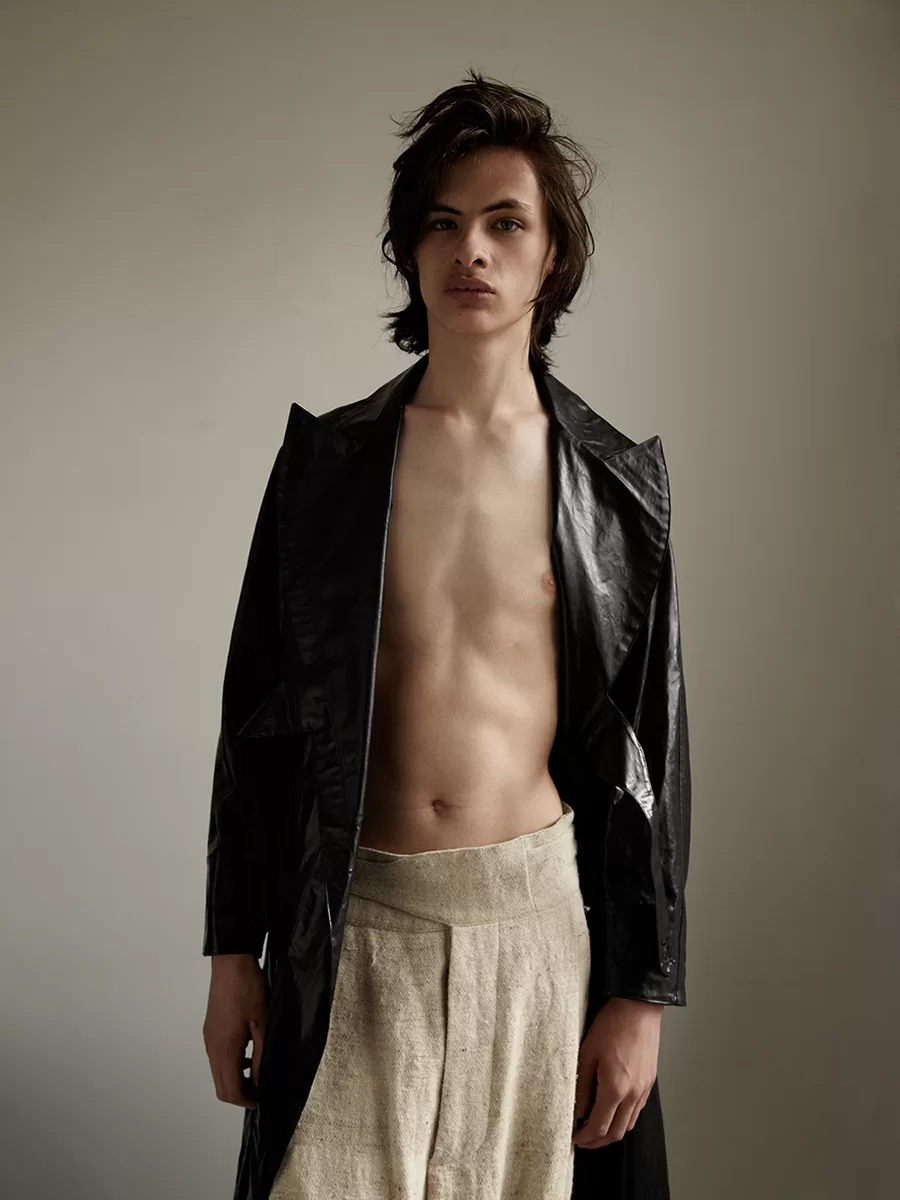
Mass consumption, fast fashion and vapid collections – these are three facets commonplace in twentyfirst century fashion, which inherently and unfortunately dismiss any sense of eco-friendly and sustainable practice. It is exactly this lack of consciousness and ignorance that recent Central Saint Martins graduate John Skelton works to tackle through his one-off timeless creations, working wholeheartedly sustainable through every step of the process.
Through his practice of creating soulful clothes steeped in historicism – with a relevant point of view sociopolitically – the 26-year-old hopes to engender change, which he emphasises is a choice. “If I am to produce more then it must be sustainable without second thought and it should stand to incite change. I am conscious that whatever I create, whatever my output is, there is a choice,” he explains.
We spoke to the York native about his ethos, how he translates his fascinations with socio-political issues and the past and present of class into his collections, and his working relationship with his younger brother and budding photographer, Ryan.
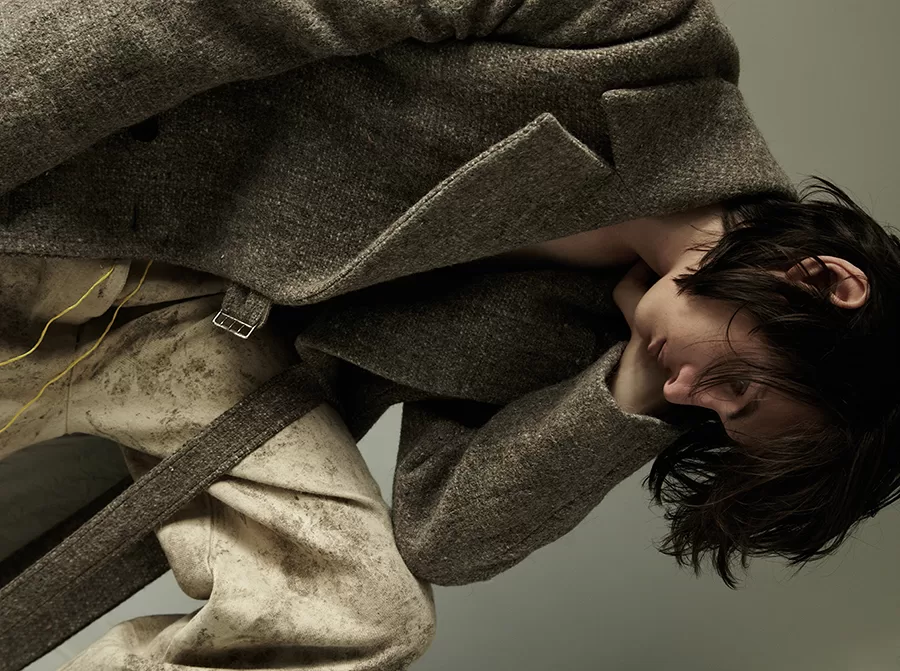
Sustainability is at the core of your label with most of your materials recycled and naturally dyed, and resources eco-friendly and native to the UK. Why is it so important for you to work in this way and what informed your ethos?
It is imperative that I work sustainably firstly because I am conscious that whatever I create, whatever my output is, there is a choice. There is a choice to either ignore or address the fact that simply adding to the incomprehensible amount of clothes that exist within the market is extremely unsustainable. Therefore, if I am to produce more then it must be sustainable without second thought and it should stand to incite change. My ethos was, and is informed by, the barrage of mass consumption/production that is unavoidably visible.
Do you find it difficult to not compromise on the design when working sustainable?
I find the restriction makes me much more creative, I feel that is has much the opposite effect for me and it furthers my design.
What are your thoughts on the progress of sustainability in fashion? Do you think there is a long way to go; what changes do you hope to see in the future?
Very slow, ignorance is unfortunately rife and especially within the fashion industry. It seems that even the younger generation of designers are not concerned about their own output, those who are the exact people needed to incite change. I would like to see designers become more conscious to influence where they are working or revue their own practices. I would like to see more of an infrastructure within the UK so that others and I can produce more autonomously within Britain.
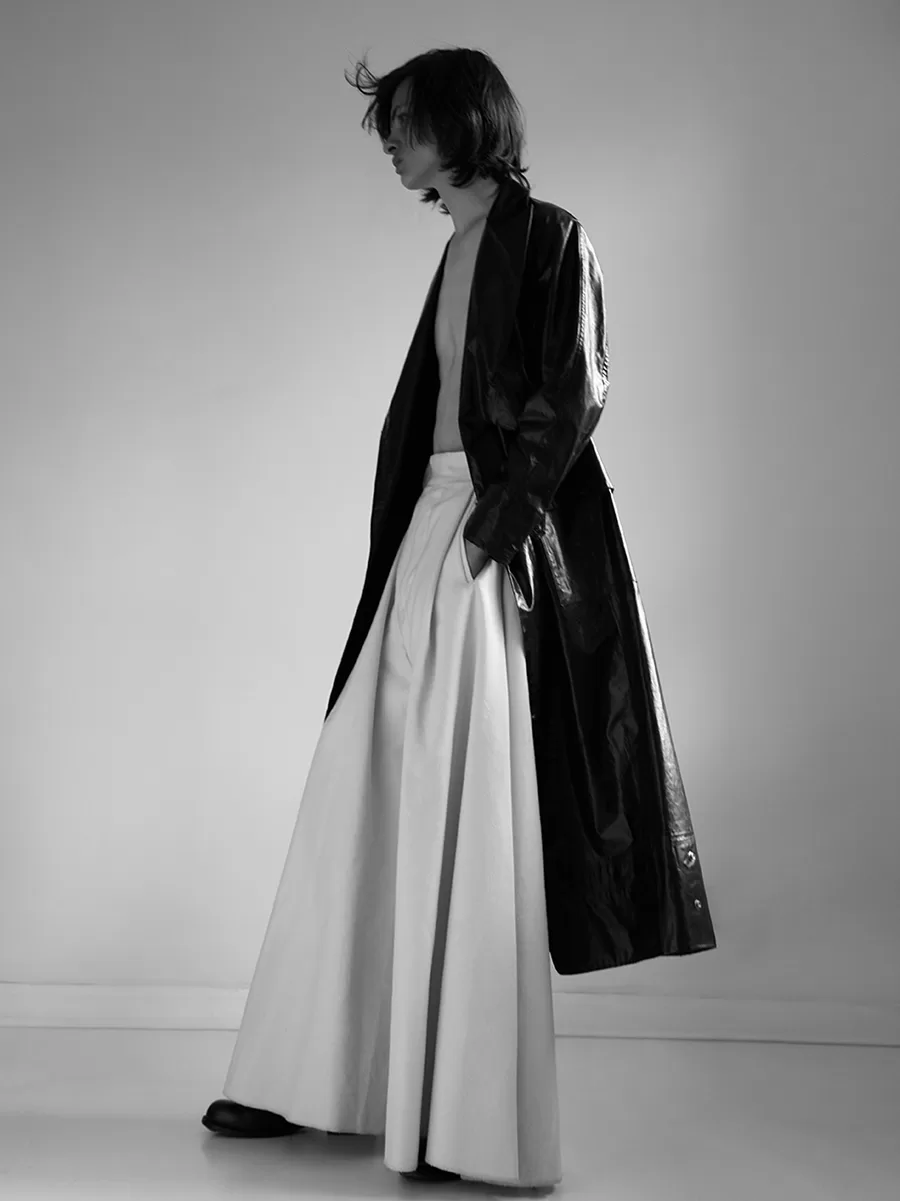
Socio-political issues and the past and present of class are explored in your collections – notably your MA collection at CSM examined Tom Harrisson’s Mass Observation study – talk to me about these fascinations and how you translate them into your clothes.
A narrative that has a foot in both the past and present fascinates me, what makes the connection between the two. The past informs the future, we see regression and staleness also. Class and the socio political are ever changing entities that experience vast change and depict our society. There is not a simple or straightforward formula as to how I translate these interests into clothes and it changes with each narrative. For example with Mass Observation it was about how the observed and the observers interacted with one another one being staunchly working class and the other a flamboyant bohemian surrealist. It is a very visceral image and translated into a silhouette which evoked and flamboyancy and the materialisation being humble raw and steadfast.
You’ve previously said that you have found it interesting how intertwined textiles has been with politics and social history. How important is fashion as a platform to explore social and political issues?
Fashion is now an enormous platform with a worldwide reach; it should be harnessed as such to express an opinion and comment on the current political climate. It is essential that we do not become an entirely complacent society and accept whatever we are presented. I find it an imperative that my work should have a relevant point of view socio politically.
Your designs have been described as biblical and precious relics that look like they have been unearthed centuries after they were made. Why are you attracted to creating an aged aesthetic?
I am interested in a cloth that has had a previous life or lifes, something that has a visible and tangible history to it. It is the essence that the clothing has a soul, it’s the antithesis of mass production. The notion of giving something a new lease of life by transformation has an innate poeticism that I am attracted to.
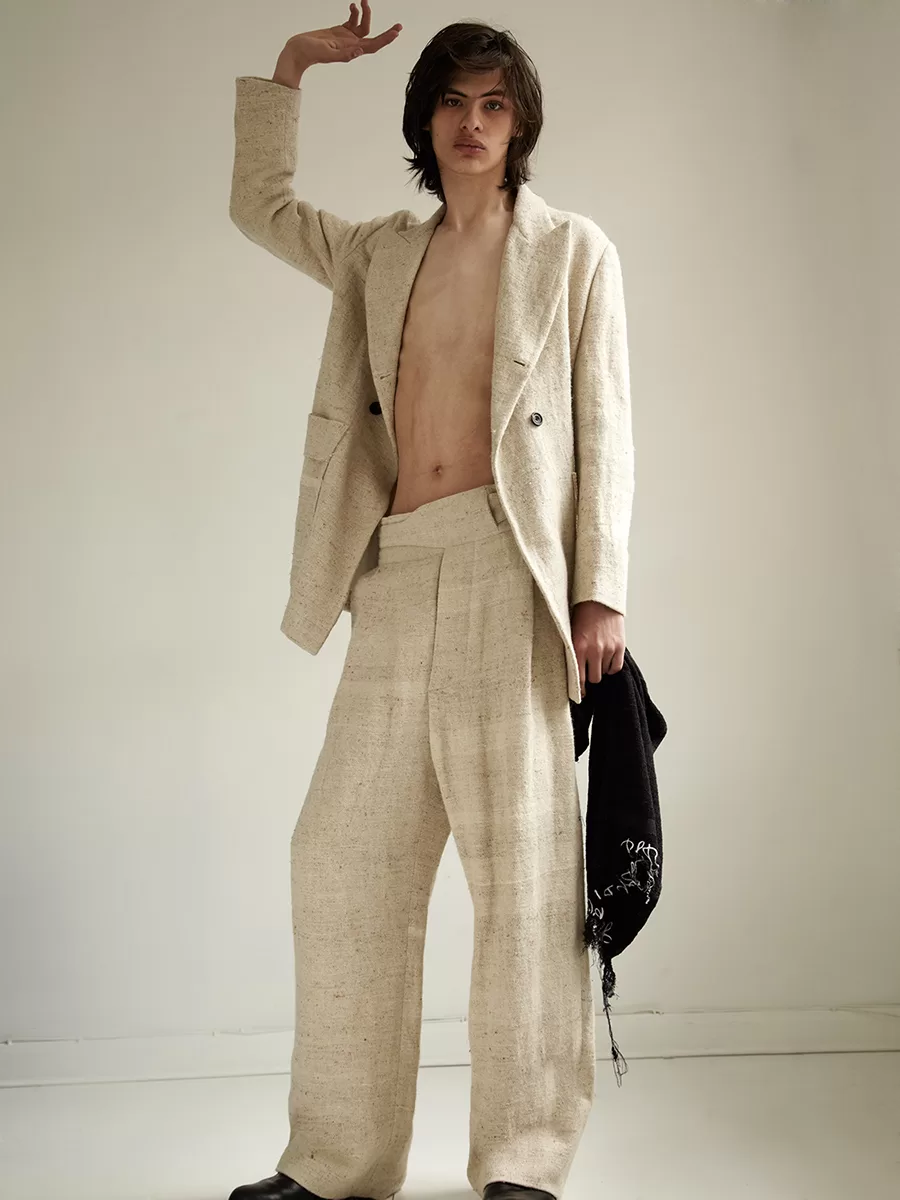
Tell me a bit about the silhouettes you create – what is the effect you hope to give the wearer and who is this person?
The silhouettes I create are inextricably linked to the narrative of the collection, they are an amalgamation of what I feel is relevant and interesting. I have no desired effect for the wearer as such other than that they feel interesting and comfortable with what they are wearing. I don’t have a preconception of who this person is, I wouldn’t want to be so restrictive.
What is your relationship like with your younger brother Ryan, who is a photographer currently studying at CSM? I understand you live and work together and he has collaborated with you on look books and photoshoots.
Ryan and I have worked very closely together from the start of the collection, the research right through to shooting look books and editorials together. He is a second pair of eyes for me. We have very similar interests and tastes so it is very natural for us to work together. We became interested in fashion at similar times so there has been a dialogue for a long time, especially so given it is not common conversation where we are from.
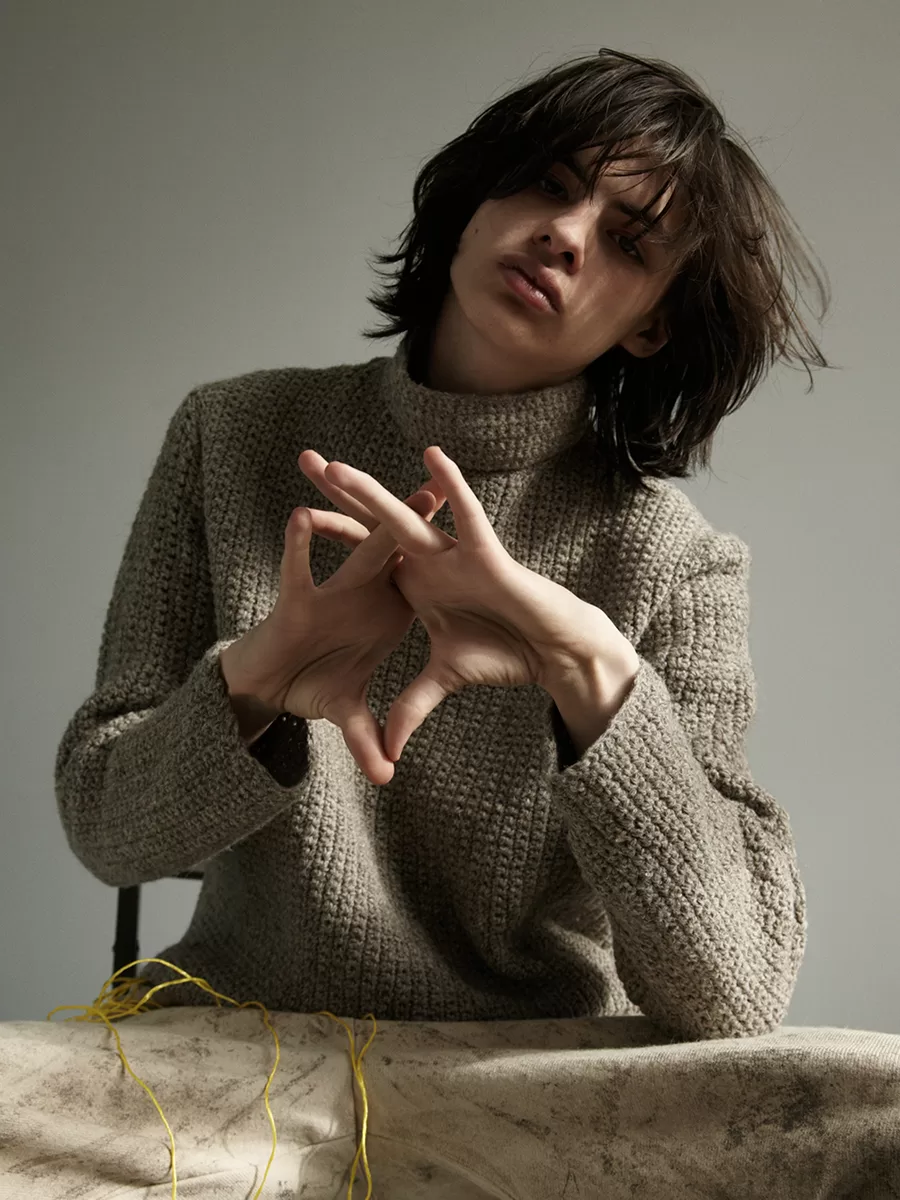
Finally, you chose to reject the traditional show schedule, instead presenting your spring/summer collection during the Frieze Art Fair this year, what was the symbolism of this move?
I think that showing on the schedule in fashion week is irrelevant and not interesting. I wanted to do it entirely in my own time and not be part of a circus where someone can only pay a few moments attention before moving on to the next mediocre show. For the work that I put in to my collections I feel it deserves more time, time to be able to come close to the fabrics and discover the processes of each item. Time to digest a narrative and become involved with an atmosphere within my show. To be honest I don’t know very many who do show on their own terms or even want to.
Photographer: Sarah Stedeford
Stylist: Shirley Amartey
Grooming: Kiyoko Odo
Model: Wilf at Wilhlemina
